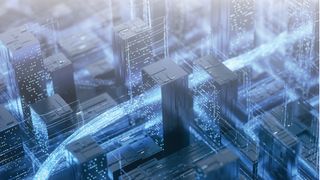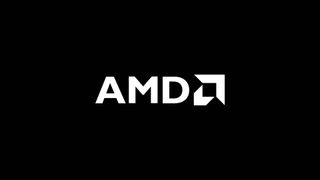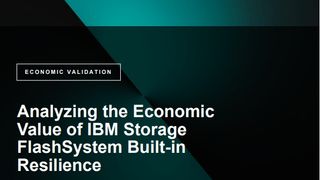What is edge computing?
Edge computing is central to making the IoT fast, secure, and useful

Edge computing, as its name suggests, refers to data processing that's done at the edge of a network, near the source of the data.
In a network, data is typically sent from devices, be that computers, smartphones, or assembly-line robots, back to a central data centre for processing and analysis.
For example, a robotic arm will send back reports on how many gaskets it has picked up and moved onto a conveyor belt, or to give a more mundane example, apps on your phone may relay performance data back to the developer's data centre (or cloud service) for mass analysis.
The endpoints and the data centre in a traditional network may be located quite far apart, potentially even on different continents. Historically, this hasn't posed a problem, as processing that data centrally before sending it back to a device was enough for previous generation endpoints. Increasingly, however, connected devices - such as Internet of Things (IoT) gadgets, sensors, and machinery - are fitted with capabilities that require instantaneous data, especially when it comes to logistics and manufacturing.
In these situations, the latency involved in sending data to and from the data centre is too great, even if it's analysed and turned around immediately. This is where edge computing comes in.
Data processing and analysis in edge computing can be done in a small, on-site data centre (such as a micro data centre) or, increasingly, in the device itself.
Real life examples of edge computing
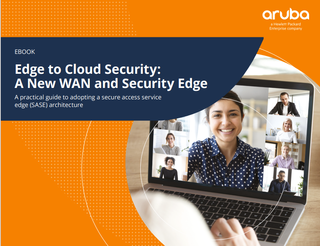
Edge to cloud security: A new WAN and security edge
A practical guide to adopting a secure access service edge (SASE) architecture
Oil rigs are a good example of how edge computing is used in the real world. Because they are typically based on remote offshore locations, they rely on the technology to mitigate lengthy distances to the data centre and poor network connections, and it's also costly, inefficient and time-consuming for rigs to send real-time data to a centralised cloud. Having a localised data processing facility helps a rig to run without delay or interruption.
Get the ITPro. daily newsletter
Receive our latest news, industry updates, featured resources and more. Sign up today to receive our FREE report on AI cyber crime & security - newly updated for 2024.
Similarly, autonomous vehicles, which operate with low connectivity, need real-time data analysis to navigate roads. Gateways hosted within the vehicle can aggregate data from other vehicles, traffic signals, GPS devices, proximity sensors, onboard control units, and cloud applications, and can process and analyse this information locally.
However, since the start of the pandemic, edge computing has stopped being solely reserved for cars and oil rigs, particularly as the technology has become easier to develop and integrate. The adoption of the technology by businesses can be credited to the rise of remote and hybrid working models which, according to last year’s research, have become a necessity for one in two UK employees. Especially in cases of numerous staff members working from rural locations far from the main office, accessing the organisation’s data centres became more challenging and heightened the demand for better network infrastructure. Hence, edge computing is becoming increasingly co-opted by businesses in order to keep workforces and customers connected and secure.
“The concept of edge computing, and analysing data where it’s created, is fast gaining momentum, as organisations are discovering how they can quickly access only the most valuable data, in real-time, that will prove mission-critical to their business,” Zizo CEO Peter Ruffley told IT Pro in March.
By utilising the edge, businesses are able to improve employees’ working experience and heighten productivity levels. Apart from enabling easy access to office applications and their associated data, the edge can also be used to power meetings and training sessions through advanced mixed reality services as well as the metaverse. The growing demand for business-aimed edge computing solutions has recently prompted IBM spin-off Kyndryl to extend its partnership with Lenovo. The two companies have announced a collaboration that will aim to provide customers with offerings ranging from the hybrid cloud to hyper-converged infrastructure (HCI) and edge computing applications.
Security risks at the edge
As an extension of a data centre, edge computing infrastructure naturally increases the surface area exposed to threats. Many edge computing devices aren't built with traditional IT security protocols, meaning that unsecured endpoints could be roped into distributed denial of service (DDoS) attacks, and could even offer hackers access to the wider network they connect to.
Physical security also needs to be a consideration, if devices are accessible to bad actors or people who could tamper with them.
However, if appropriate precautions are taken, edge computing can actually reduce IoT security and privacy risks by limiting the data flow between the collection point and the core storage centre, according to research from IDC.
What next for edge computing?
Edge computing is an area of technology that is constantly evolving and rapidly growing, and is quickly becoming one of the key components in enterprise infrastructure, according to recent forecast by Gartner. The analyst house predicts that, by the end of 2023, one in five installed edge computing platforms will be delivered and managed by hyper-scale cloud providers, compared to less than 1% last year.
It also recommended basing an enterprise’s edge computing architecture and topology on use-case requirements as well as opting for edge computing partnerships and ecosystems which are capable of delivering a total solution, as opposed to a single-vendor approach.
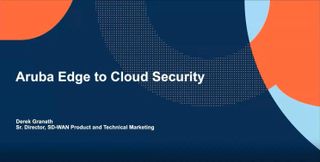
Edge-to-cloud security webinar
Safeguards your IoT devices that require Zero Trust
FREE DOWNLOAD
Moreover, a 2019 Gartner forecast in emerging technologies found that, in the next five to ten years, AI and analytics will play a prominent role in edge computing. Prior to that, we can expect enterprise data generated and processed outside of a traditional data centre to increase to 75% by 2022, from less than 10% in 2018.
However, this isn’t too shocking, especially if you consider the ever-growing popularity of IoT devices among both businesses and consumers. According to last year’s study by Jupiter Research, the number of Industrial IoT connections will increase from 17.7 billion in 2020 to 36.8 billion in 2025, representing an overall growth rate of 207%.
Edge computing will also be instrumental in the rollout of autonomous vehicles, with a number of tech giants gearing up to tap into this emerging market: Volkswagen recently extended its partnership with Microsoft to further boost the development of its self-driving car software, while last year Amazon snapped up the autonomous vehicle startup Zoox for more than $1 billion.
Edge computing and 5G
One of the most compelling examples of edge computing in action is in the rollout of 5G technology, and many see the two technologies as inextricably linked.
Although the next generation of networking technology boasts never-before seen speeds, the reality is that the average customer and business won't be able to take advantage of these, largely because where and how you access 5G will make an enormous difference to how well the network performs.
In dense urban areas, for example, 5G networks are heavily reliant on small cell technology in order to relay signals around physical objects that otherwise block access. In rural settings, you may find that a 5G connection is no better than previous generations if infrastructure is lacking.
Even if a business is able to secure a strong 5G connection, the technology is still sending data to a data centre for processing, which may not be the best option for those requiring instantaneous data - even with the faster transfer speeds. That's where edge computing can come in. Many 5G companies have already started to develop their own edge development platforms that allow for the building of applications capable of using the instant data processing of edge computing alongside the ultra-fast connections supported by 5G.
Bobby Hellard is ITPro's Reviews Editor and has worked on CloudPro and ChannelPro since 2018. In his time at ITPro, Bobby has covered stories for all the major technology companies, such as Apple, Microsoft, Amazon and Facebook, and regularly attends industry-leading events such as AWS Re:Invent and Google Cloud Next.
Bobby mainly covers hardware reviews, but you will also recognize him as the face of many of our video reviews of laptops and smartphones.


